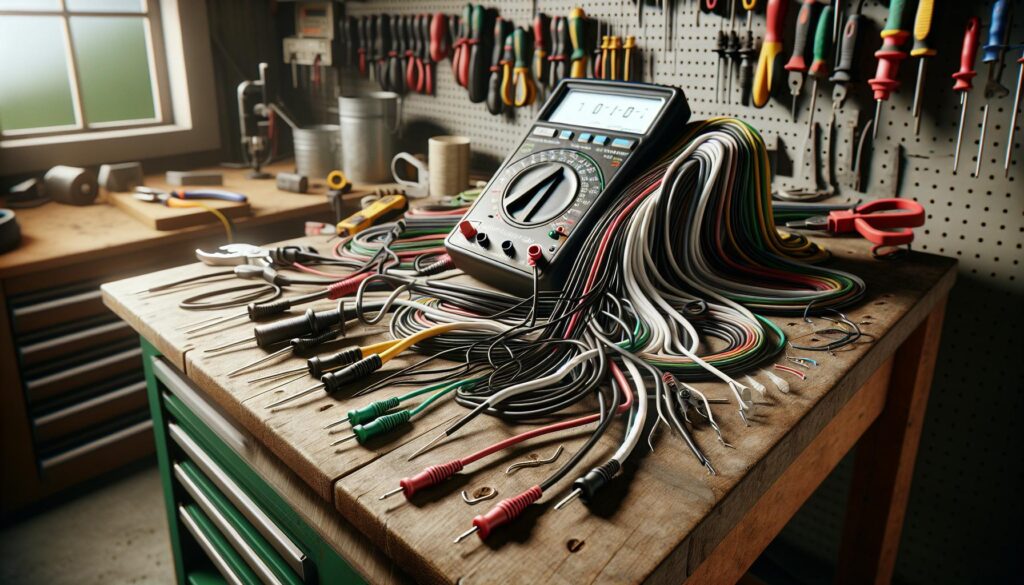Understanding the difference between hot and neutral wires is crucial for anyone working with electrical systems. Misidentifying these wires can lead to dangerous situations, making it essential to know how to distinguish between them. Whether you’re a DIY enthusiast or just curious about electrical safety, grasping this concept can empower you to tackle projects with confidence.
Hot wires carry the electrical current, while neutral wires provide a return path. Recognizing their roles and appearances can prevent accidents and ensure proper functionality in electrical installations. This guide will walk you through simple methods to identify hot and neutral wires, equipping you with the knowledge to handle electrical tasks safely and effectively.
How To Tell Hot Wire From Neutral
Electrical wiring consists of several components, each serving a specific function. Understanding hot, neutral, and ground wires helps in performing safe electrical work.
What Are Hot, Neutral, and Ground Wires?
- Hot Wires: Hot wires carry electrical current from the power source to the electrical device. They are typically black or red in color.
- Neutral Wires: Neutral wires provide a return path for electric current back to the power source. They are usually white or gray.
- Ground Wires: Ground wires protect against electrical shock by directing any stray electricity safely into the ground. These wires are often green or bare.
- Safety: Proper identification minimizes the risk of electric shock or short circuits.
- Equipment Protection: Correct wiring prevents damage to electrical devices by ensuring the right connections.
- Compliance: Understanding these wires ensures adherence to electrical codes and regulations, providing peace of mind during installations and repairs.
Methods to Identify Hot Wires

Identifying hot wires accurately is crucial for safe electrical work. Two primary methods are commonly used: voltage testers and multimeters.
Using a Voltage Tester
Using a voltage tester provides a simple way to check whether a wire is hot. A non-contact voltage tester, for example, detects the presence of voltage without direct contact. To use it, hold the tester near the wire in question. If the tester beeps or lights up, the wire is likely hot. For contact testers, strip a small section of insulation from the wire and touch the tester’s probe to the exposed copper. A reading or indicator light confirms the wire’s status.
Using a Multimeter
Using a multimeter offers a more detailed analysis of wire status. Set the multimeter to the AC voltage setting, which measures the voltage in hot wires. Connect one probe to the wire and the other to a ground or neutral wire. A reading above zero volts indicates the wire is hot. For accuracy, confirm all connections are secure and the multimeter is functioning properly. This method allows for specific voltage readings and can help identify any faulty wiring issues.
Recognizing Neutral Wires
Neutral wires carry current back to the electrical panel, ensuring the completion of the circuit. Identifying these wires accurately is essential for safe and effective electrical work.
Visual Identification
Neutral wires typically exhibit specific characteristics for easy identification. Neutral wires are usually white or gray in color. They often have a smooth, insulated exterior. In multi-wire circuits, neutral wires may be slightly thinner than hot wires, which are generally black or red. Checking the wire’s connection points can also provide insight; neutral wires connect to the neutral bar in the panel and are secured to devices like outlets.
Signs of Wiring Damage
Wiring damage can indicate problems with neutral wires. Signs include frayed insulation, discoloration, or burn marks. Excessive heat around the wire could signal overloading. If a neutral connection appears loose or corroded, it compromises the return path and increases the risk of malfunction. Regular inspections for these signs help ensure the integrity and safety of the electrical system.
Safety Precautions
Ensuring safety during electrical work is vital. Adhering to proper procedures and using the right tools minimizes risks associated with hot and neutral wire identification.
Proper Tools to Use
Using appropriate tools enhances safety and accuracy. Essential tools include:
- Insulated Screwdrivers: Protect against electrical shock when working on live circuits.
- Non-Contact Voltage Tester: Detects voltage presence without direct contact with wires.
- Multimeter: Measures voltage, current, and resistance for detailed inspection.
- Wire Strippers: Safely remove insulation without damaging wires.
- Electrical Gloves: Wear rubber gloves to insulate against electrical hazards.
Always double-check tools for functionality before usage.
Avoiding Common Mistakes
Avoiding mistakes is crucial for safety. Common errors include:
- Ignoring Power Sources: Always ensure the power is off before working on wiring.
- Inadequate Testing: Use a voltage tester on all wires before confirming status, selecting wires incorrectly can lead to shocks.
- Confusing Wire Colors: Remember that wire colors can vary by region; rely on voltage testing instead of color assumptions.
- Neglecting Ground Wires: Ensure ground wires are connected properly to minimize shock risks.
- Rushing the Process: Take time to accurately identify wires and avoid shortcuts that can lead to mishaps.
Staying attentive to these details fosters a safer environment while handling electrical tasks.
Understanding how to differentiate between hot and neutral wires is vital for anyone working with electrical systems. Proper identification not only enhances safety but also ensures compliance with electrical codes. By utilizing tools like voltage testers and multimeters, individuals can confidently determine the status of wires and address any issues effectively. Regular inspections for signs of wear or damage further contribute to a safe electrical environment. Adhering to safety precautions and using the right tools is essential for minimizing risks. With this knowledge, anyone can approach electrical tasks with increased confidence and competence.
